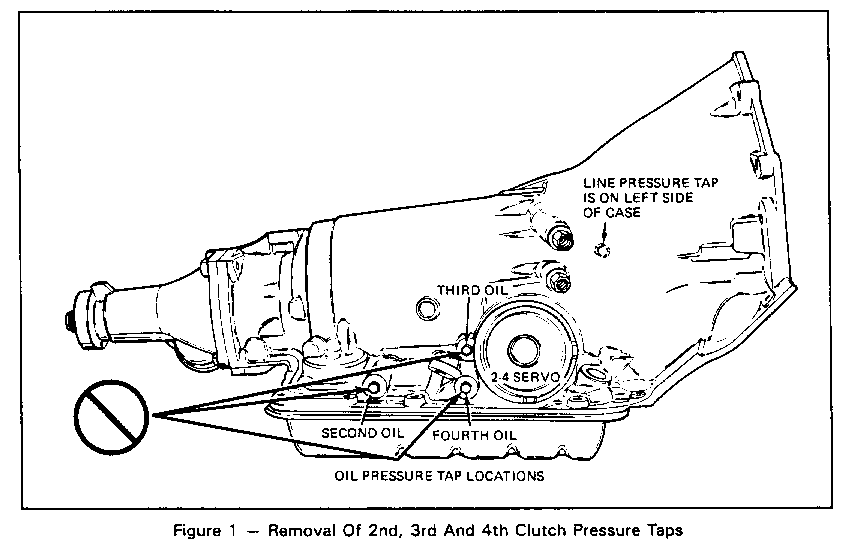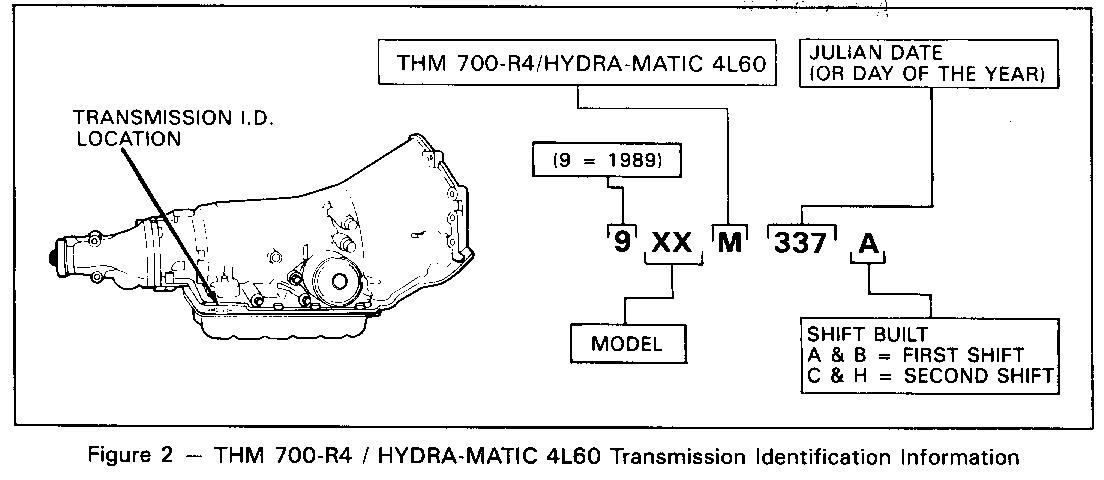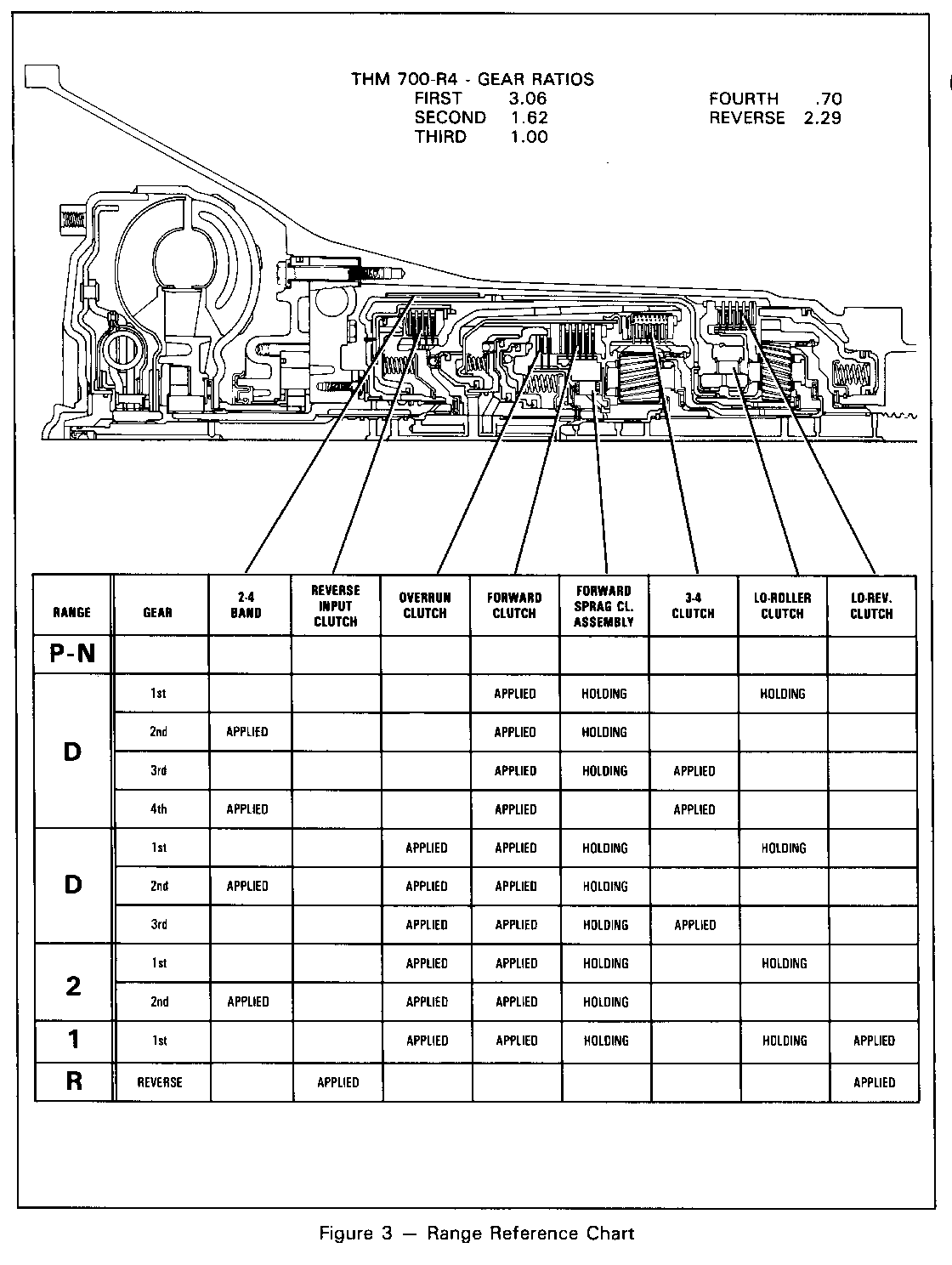NEW CASE ASSEMBLY (PRESSURE TAPS ELIMINATED)

TRANSMISSION APPLICATIONS: SUBJECT:
1982 - 1989 THM 700-R4/HYDRA- NEW CASE ASSEMBLY - ELIMINATION OF MATIC 4L60 (MD8) 2ND,3RD AND 4TH PRESSURE TAPS
TRANSMISSION MODELS: VEHICLE APPLICATIONS:
ALL B,F,Y - CARS, C,K,R,V,S,T - TRUCKS G AND M VANS Bulletin Covers:(Figure 1) ---------------- Service information for new THM 700-R4/HYDRA-MATIC 4L60 Case assemblies. The new case will no longer have the 2nd, 3rd or 4th clutch pressure taps. Mainline pressure tap remains unchanged. The clutch pressure taps require case bosses to bring the channeling to the exterior of the case and provide an area to tap and plug the pressure ports. The casting process necessary to provide the case bosses and channeling increase the chance of case porosity in those areas. By removing the clutch pressure taps, the casting can be changed to reduce incidences of case porosity and leaks.
DATE OF PRODUCTION CHANGE: (Figure 2) -------------------------- Starting December 2, 1988 (Julian Date 337) all THM 700-R4/ HYDRA-MATIC 4L60 transmissions were built without drilling and tapping the 2nd, 3rd, or 4th clutch pressure taps. The case bosses will be removed through normal die maintenance.
SERVICE ACTION:
Even though individual clutch pressure readings are no longer available, use of basic diagnostic procedures, as outlined in the Service Manuals, will result in successful diagnosis of an automatic transmission concern. The first step in systematic transmission diagnosis is to obtain a complete description of the condition from the vehicle owner.
Gather as much information from the Owner as they can provide. As an example, under what driving situations does the condition occur, whether the condition is more noticeable when the vehicle is hot or cold, or in what gear range does the condition become evident.
Before driving the vehicle, check that proper fluid level and correct T.V. cable setting have been maintained. Check minimum and maximum mainline pressures against the transmission pressure charts updated and printed each year in the appropriate Service Manuals. Also, one of the preliminary checks should include making certain that the engine is in proper tune and not contributing to or mistaken for a transmission condition.
With all preliminary information collected, the vehicle should then be road tested. During the road test, note when and in what range the condition occurs. By comparing this information with the range reference chart (refer to Figure 3) you can begin to eliminate known good circuits and/or clutches. Through this process of elimination, it is possible to pinpoint the circuit and/or clutch that is causing the condition.



General Motors bulletins are intended for use by professional technicians, not a "do-it-yourselfer". They are written to inform those technicians of conditions that may occur on some vehicles, or to provide information that could assist in the proper service of a vehicle. Properly trained technicians have the equipment, tools, safety instructions and know-how to do a job properly and safely. If a condition is described, do not assume that the bulletin applies to your vehicle, or that your vehicle will have that condition. See a General Motors dealer servicing your brand of General Motors vehicle for information on whether your vehicle may benefit from the information.
